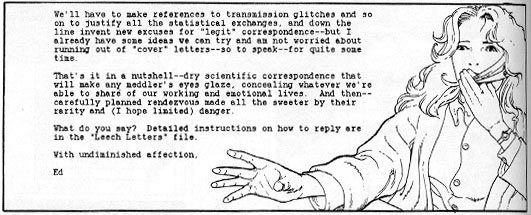 By Paul Chadwick
By Paul Chadwick
208 pages, black and white or color
Published by Dark Horse
One of the real joys of reading Concrete is that Paul Chadwick is able to use a wide variety of genres and moods in his series. One story may be a rip-roaring action adventure, the next a socially-conscious tale with no right answers. It’s something that I’ve really noticed reading Dark Horse’s recent series of Concrete reprints—that no matter what tactic Chadwick takes, it’s always undeniably Concrete.
Concrete may be a minor celebrity as a seven-foot tall stone behemoth, but he still needs to find a way to pay the bills for both himself and his assistant Larry Munro. When a major motion picture wants to hire Concrete to work in their special effects department, Concrete thinks this will be the easiest money he’s ever made. What he’s about to discover, though, is that nothing in making a movie is even remotely easy.
Chadwick’s always had a nice sense of humor when writing Concrete, but this is a story where he’s able to really cut loose thanks to the crazy nature of making a movie. Every twist and turn would seem outlandish if there wasn’t a little voice in the back of your head saying, “This is probably standard stuff for most movies.” (Sure enough, Chadwick’s introduction lets on that his time working for one movie was inspiration for Concrete: Fragile Creature.) It’s a whimsical sort of story, so when things suddenly take a grim shift at the end of the third act it’s a little startling, feeling almost like it’s coming out of left field. The conclusion of the story balances the earlier, fun tone with the more serious one and while both thematically fit with Concrete in general, the two being side-by-side means that each detracts from the other. It’s a tough balancing act that doesn’t entirely work. What does work, though, is the subplot of Dr. Maureen Vonnegut working with Professor Ed Buchner despite the warnings from the government to keep away from him. Chadwick really communicates Maureen’s desire to learn more about Concrete’s physiology despite the dangers of losing her job in the process as something realistic and understandable. Even as Concrete: Fragile Creature‘s main story often feels crazy and outlandish (despite being based on the reality of the business), the subplot with Maureen and Ed grounds the book as a whole. Chadwick ultimately didn’t need to add in the extra piece of drama towards the end of the book, because he had enough drama and seriousness already built into the story.

My one big complaint about the Concrete reprint series is that with Fragile Creature, we’re starting to get stories printed in black and white that were originally drawn for color. Unfortunately for us as a reader, the way that Chadwick draws his art as intended for color printing is very different than when it will be black and white. Chadwick’s art here uses a very thin, light ink line, no doubt planning to let the colors help define the boundaries of his figures. While the characters still have Chadwick’s trademark beautifully defined faces and figures, they seem almost washed out in places. Likewise, some scenes are very hard to follow with the color stripped out of the series; Concrete throwing a girder through a wall is difficult to comprehend at first, the art looking like it lacks perspective and clarity. Likewise, the big scene at the end of the third chapter had me scratching my head and trying to figure out what happened, despite having originally read these stories almost fifteen years ago. Fortunately, enough of Concrete‘s art will still enchant both new and old readers. It’s the little scenes, like Maureen touching the computer screen upon reading Ed’s letter at the end of the story that will still grab you as a reader. Her face looks so surprised, so vulnerable that Chadwick shows exactly why he’s a master of his craft; he’s able to really bring the page to life in the blink of an eye.

Last but not least, Concrete: Fragile Creature contains more of Chadwick’s short stories at the end. This is great, not only because most of the ones in this volume are directly connected to Fragile Creature itself, but because it lets you see Chadwick’s art for when it’s originally intended to be printed as black and white. The lines are much thicker and strongly defined, and it’s a nice final visual impression on the reader. Despite my quibbles with both the story and the reprinting of the art, I do still think that Concrete: Fragile Creature is a good book and I’m genuinely delighted that Dark Horse is reprinting Chadwick’s seminal series. Concrete has always been one of the gems in Dark Horse’s stable, and seeing it being reissued for a whole new set of readers makes me really happy.
Purchase Links:
